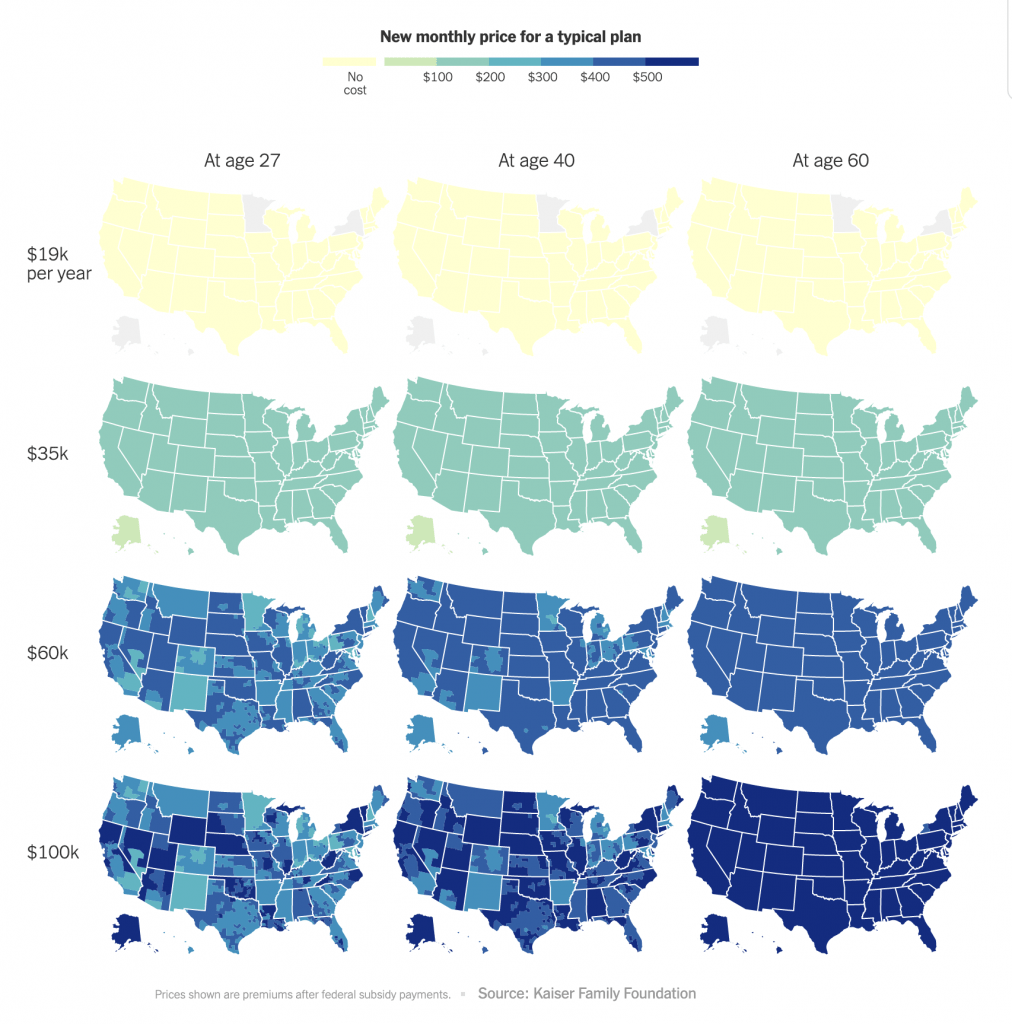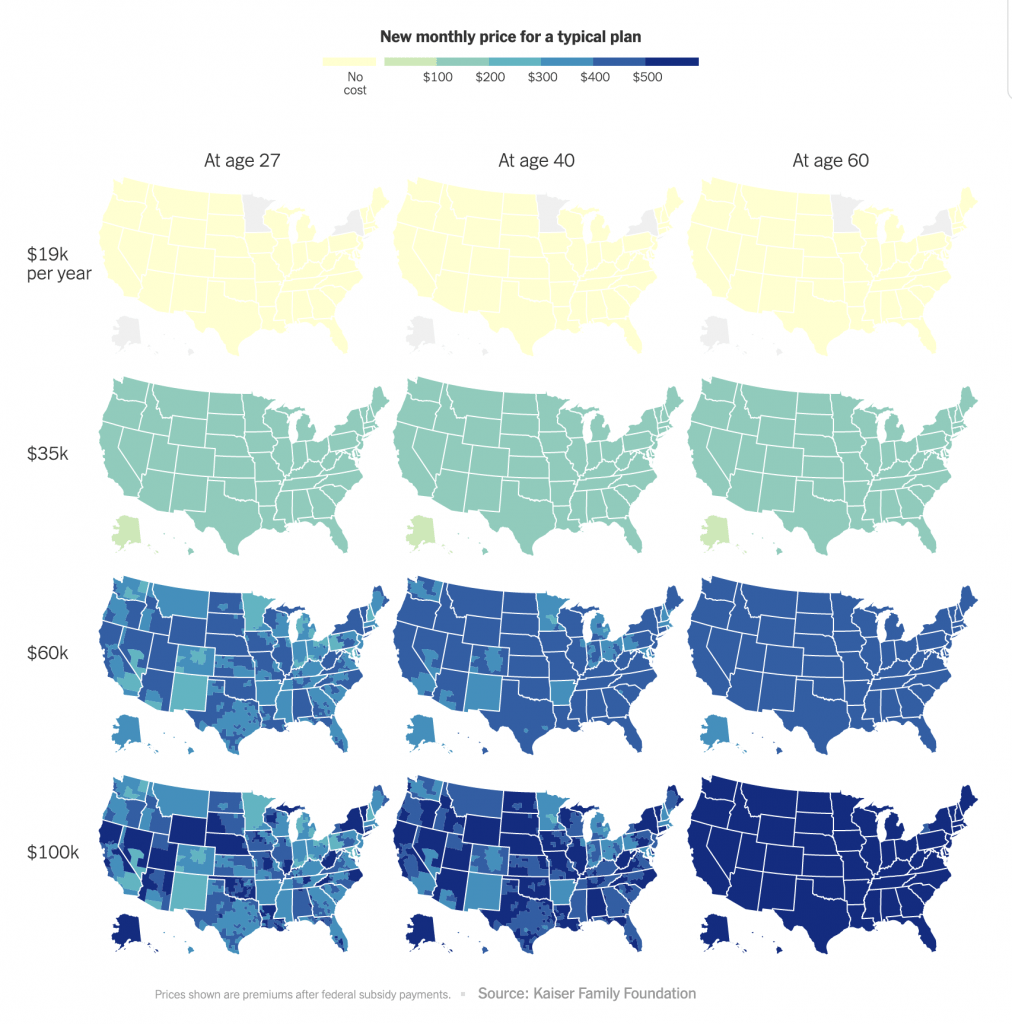For this year and next, the stimulus bill boosts subsidies for nearly all those buying their own coverage, making insurance free for more people and giving higher-income people discounts for the first time.
Under the stimulus bill passed by Congress this week and signed by President Biden on Friday, nearly all those who buy their own insurance are eligible for a discount.
The American Rescue Plan broadens the subsidies available under the Affordable Care Act for comprehensive health insurance — increasing them for people who are already eligible, and providing new assistance for people with incomes previously too high to qualify. The top set of maps, drawn from calculations made by the Kaiser Family Foundation, show how much the changes will reduce what people pay for health insurance around the country, depending on their location and age.
The changes mean small adjustments for some Americans and very substantial ones for others. For anyone earning around $19,000, subsidies will now be generous enough to sign up for a typical plan with no monthly payment. For someone earning over $51,000, new subsidies could lower premiums by as much as $1,000 a month in the country’s most expensive markets.
Some groups still won’t qualify for help: undocumented immigrants, and poor Americans in states that have not expanded Medicaid under an option provided by the Affordable Care Act. But a large majority of uninsured Americans can now get financial help buying insurance, according to Cynthia Cox, a vice president at Kaiser.

The maps here show roughly how much Americans who buy such plans will need to pay each month under the new rules. All the eligible plans must cover a standard set of comprehensive benefits, including prenatal care, prescription drugs and mental health services — more coverage than is available in the short-term plans or health-sharing ministries that some middle-income Americans are currently enrolled in.
To qualify for the new benefits, people need to sign up for plans at Healthcare.gov, an approved web-broker or a state exchange website. The changes will be retroactive to Jan. 1, meaning that people who already have Obamacare plans will get money back. Anyone who is uninsured now can qualify for new prices as soon as they sign up. But experts say it may take a little while for the subsidy changes to show up on Healthcare.gov. If you sign up right away, you may have to pay the old price for the first month and wait for a refund.
If you are receiving unemployment insurance, the legislation entitles you to a special discount: Regardless of your income, your premiums will look similar to that of the person earning $19,000 on our maps. And if you lost your coverage at work and want to keep it, the bill will also pay the full cost of your premiums for six months under the federal COBRA program.
Notes: Premiums and subsidies displayed here are for individuals buying a silver plan at the second-lowest price in their market. But subsidies are calculated differently depending on family sizes. A family of four earning around $40,000 would pay the same premium as an individual earning $19,000, for example.
In a handful of states, people earning $19,000 won’t qualify for new subsidies because they already qualify for other low-cost state insurance programs — Medicaid in Alaska, Hawaii and the District of Columbia; and the basic health plan in Minnesota and New York (the basic health plan is Medicaid-like coverage with low premiums for a sliver of low-income Americans in certain states).
If you want to calculate the premium you would pay for your income, household size and location, this online tool may be helpful.




0 Comments